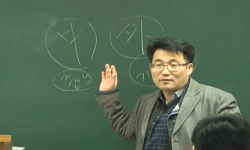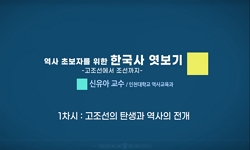The Buddhist Bureaus, such as the Imperial priest examination and the Buddhist Priest Office, were government authorities which were not found in India, the origin of the Buddhism. Those religious systems related to the government had appeared, as the...
http://chineseinput.net/에서 pinyin(병음)방식으로 중국어를 변환할 수 있습니다.
변환된 중국어를 복사하여 사용하시면 됩니다.
- 中文 을 입력하시려면 zhongwen을 입력하시고 space를누르시면됩니다.
- 北京 을 입력하시려면 beijing을 입력하시고 space를 누르시면 됩니다.
https://www.riss.kr/link?id=T12195008
- 저자
-
발행사항
서울 : 동국대학교 대학원, 2010
- 학위논문사항
-
발행연도
2010
-
작성언어
한국어
- 주제어
-
DDC
216.3
-
발행국(도시)
서울
-
형태사항
iv, 201p. : 표 ; 26cm
-
일반주기명
참고문헌 : p. 191-196
- DOI식별코드
- 소장기관
-
0
상세조회 -
0
다운로드
부가정보
다국어 초록 (Multilingual Abstract)
The Buddhist Bureaus, such as the Imperial priest examination and the Buddhist Priest Office, were government authorities which were not found in India, the origin of the Buddhism.
Those religious systems related to the government had appeared, as the religion had been transferred to East Asia. They existed not only in Goryeo but also in China and Japan as a distinctive mark of East Asian Buddhism.
The Buddhist Bureau System in Silla period so far has been regarded that it was used to fit the religion into the national purpose. However, considering the Buddhism served the ruling class's ideological need for itself and was recognized as the national religion at that time, the system must have been built for the interests of both the religion and the government.
Comparing to China, where the Priest Bureau System had been came out by the government's intervention after the Buddhist schools completely settled down by themselves, the system had almost simultaneously appeared with establishing the religion in Silla.
The Buddhist Bureau became more systematic than Silla's or Chinese one when it came to Goryeo period. It was related to the Buddhism worship policy from the First King of Goryeo.
He left Ten Commandments for Governing Ideology(訓要十條). Worshipping Buddhism as national religion was the fourth commandment.
Regarding the Buddhism's development, many ceremonies and doctrinal schools division, it is obvious that Goryeo had deeply related to the religion from its start.
The imperial priest examination had been held since GwangJong, the forth King of Goryeo. The priest order, which was decided by the examinations, provided a momentum for the birth of new schools from the existing academically oriented schools.
In fact, before Goryeo dynasty, Buddhism was remained in academically oriented schools which were described by the term ‘gyo’, meaning 'learning' or ‘study’.
The Bureau System imposed duties to the religion. On the other hand, the priest order gave it rights and authorities. Those systems helped the government and the religion to development together with strong partnership.
In conclusion, the Imperial priest examination, which began to be held in the reign of KwangJong of Goryeo, formed a systematic foundation for the new meditation based schools with weakening of the doctrinal schools.
Compared to the Gyo schools had been maintained mainly through personal connections, the new schools were developed based on institutional devices.
The priest order established through the priest examination was a way of cultivating men of ability for both the Kingdom and the religion. The priests passed the examination had the government-given power like public officers. They also spoke out for the religion to the government.
In the system, the government and the Buddhism cultivated and shared talented people together. It was possible because the system was built on the mutual agreement of the both parts.
The Buddhist Government Office, which started from YangJie(兩家), later had divided into details. Since the middle of Goryeo Dynasty, the name of divided parts also had been changed.
They can be classified into two groups : Seon schools and Gyo schools. It was possible to distinguish the office belonged to which school by its name.
The Three Priest Positions(San Gang) originally had no relationship with the Buddhist Bureau System. But after the priest order was settled down, the priests from the order gradually took the Three Positions, too. Since the middle of Goryeo Dynasty, the boundary between priesthood and priest officer had become vague. All the temples not only in capital area but also in the provinces were controlled by the bureau.
The Master Priest as the King’s Teacher and National Master Priest were also part of the Buddhist Priest Bureau, but had different character.
Actually the office of bureau had powers and authorities to control the Buddhist organizations. On the contrary, the two Master positions were more like symbols of the national religion.
Especially the National Master Priests mostly got the posthumous conferment honors, so that it seems the bureau had nothing to do with them.
The Master Priest as the King's Teacher were selected from the bureau from time to time. But the position rarely had power on the politics and the Buddhist Bureau. It was more likely to be a honored position.
Buddhism in Goryeo period was characterized by the begin and growth of new schools, ideological development and etc. Most of the traits were related to the Buddhist priest bureau system.
It thus appears that it is very important to study the system to understand Buddhism all through the Goryeo period. It also had affected to Joseon Dynasty period when Buddhism had been suppressed by the confucian ideological movement for almost 500 years. The institutional development of the priest examination, the priest order, Buddhist Government Office, and Buddhist bureau system shows that Buddhism made an impressive progress in religious and national way without being partial. Especially in Goryeo, the system affected on the foundation and development of the new school based on meditation.
However, due to the lack of historical records, there are so many problems to do the research on the influence on Buddhism and the changes of the system.
It is important for understanding Buddhist history of Korea and East Asia to keep on studying the Buddhist schools and government's policy toward Buddhism.
목차 (Table of Contents)
- Ⅰ. 序論 1
- 1. 연구목적 1
- 2. 선행연구의 검토 4
- 3. 연구범위와 방법 7
- Ⅱ. 高麗 僧官制의 淵源 10
- Ⅰ. 序論 1
- 1. 연구목적 1
- 2. 선행연구의 검토 4
- 3. 연구범위와 방법 7
- Ⅱ. 高麗 僧官制의 淵源 10
- 1. 三國時代 僧職의 발전 10
- 1) 高句麗 및 百濟의 僧職과 僧官制 11
- 2) 신라 惠亮의 僧統位 성립과 僧職 18
- 2. 統一新羅의 僧官制 22
- 1) 護佛的 僧官制의 실시 22
- 2) 正法典 성립 26
- 3) 국가불교화 성격의 僧官制 시행 32
- Ⅲ. 高麗時代 僧科制의 실시 36
- 1. 僧科制의 실시와 국가정책 36
- 1) 僧科制 실시배경과 내용 36
- 2) 光宗의 僧科制 실시 41
- 3) 僧科制와 불교사상발전의 관계 46
- 2. 僧科制와 僧階成立 49
- 1) 僧科制를 통한 僧階成立 49
- 2) 고려시대 僧階의 기능 53
- 3) 僧階成立과 교단구조의 변화 57
- 3. 僧科制를 통한 교단통일과 국가 61
- 1) 僧科의 분류와 시행방법 61
- 2) 宗選과 大選의 내용 64
- 3) 禪敎兩宗의 法階와 王師.國師의 배출 67
- Ⅳ. 僧錄司 설립과 僧官制 71
- 1. 僧錄司 설립과 발전 71
- 1) 高麗前期 승록사 설립초기의 구조 72
- 2) 高麗中期 승록사의 직급과 역할 79
- 3) 高麗後期 승록사를 통한 都僧統의 등장 83
- 2. 僧錄司의 교단사적 의미 87
- 1) 중국과 고려 승록사 비교 87
- 2) 고려 행정기구내 사회적 위치 88
- 3) 교단 내 승록사의 의미 92
- 3. 僧錄司를 통한 僧官制의 확립 98
- 1) 국가통제기구의 승관제 98
- 2) 교단의 국가적 위상 확립 100
- 3) 승록사와 王師.國師의 책봉 104
- Ⅴ. 고려시대 王師.國師 제도 109
- 1. 王師.國師제도의 성립과정 109
- 2. 고려 전기 王師.國師制度의 확립 112
- 1) 王師의 책봉사례 112
- 2) 國師의 책봉사례 120
- 3. 고려 후기 王師.國師制度의 시행과 변천 131
- 1) 王師의 책봉사례 131
- 2) 國師의 책봉사례 139
- Ⅵ. 고려시대 僧官制의 성격 149
- 1. 고려 僧官制의 성립배경 149
- 1) 太祖의 護佛政治와 奉佛 149
- 2) 三綱과 승관제의 관계 153
- 2. 고려 승관제의 정립과 문제점 157
- 1) 승과제의 정착과 승정기구의 설립 157
- 2) 僧團의 정치참여 158
- 3) 승관제 실시로 인한 교단의 폐단 168
- 3. 고려 승관제의 특성 174
- 1) 중국 승관제와 고려 승관제의 비교 174
- 2) 삼국시대와 고려 승관제의 차이점 177
- 3) 고려 승관제의 특수성 180
- Ⅶ. 결론 187
- 참고문헌 191
- Abstract 197












